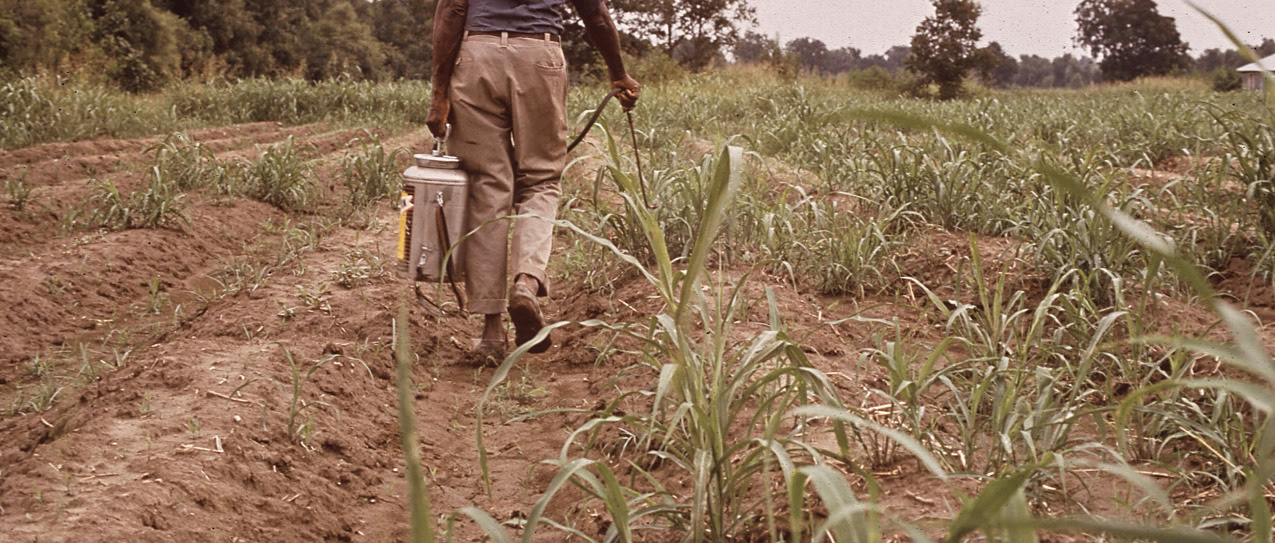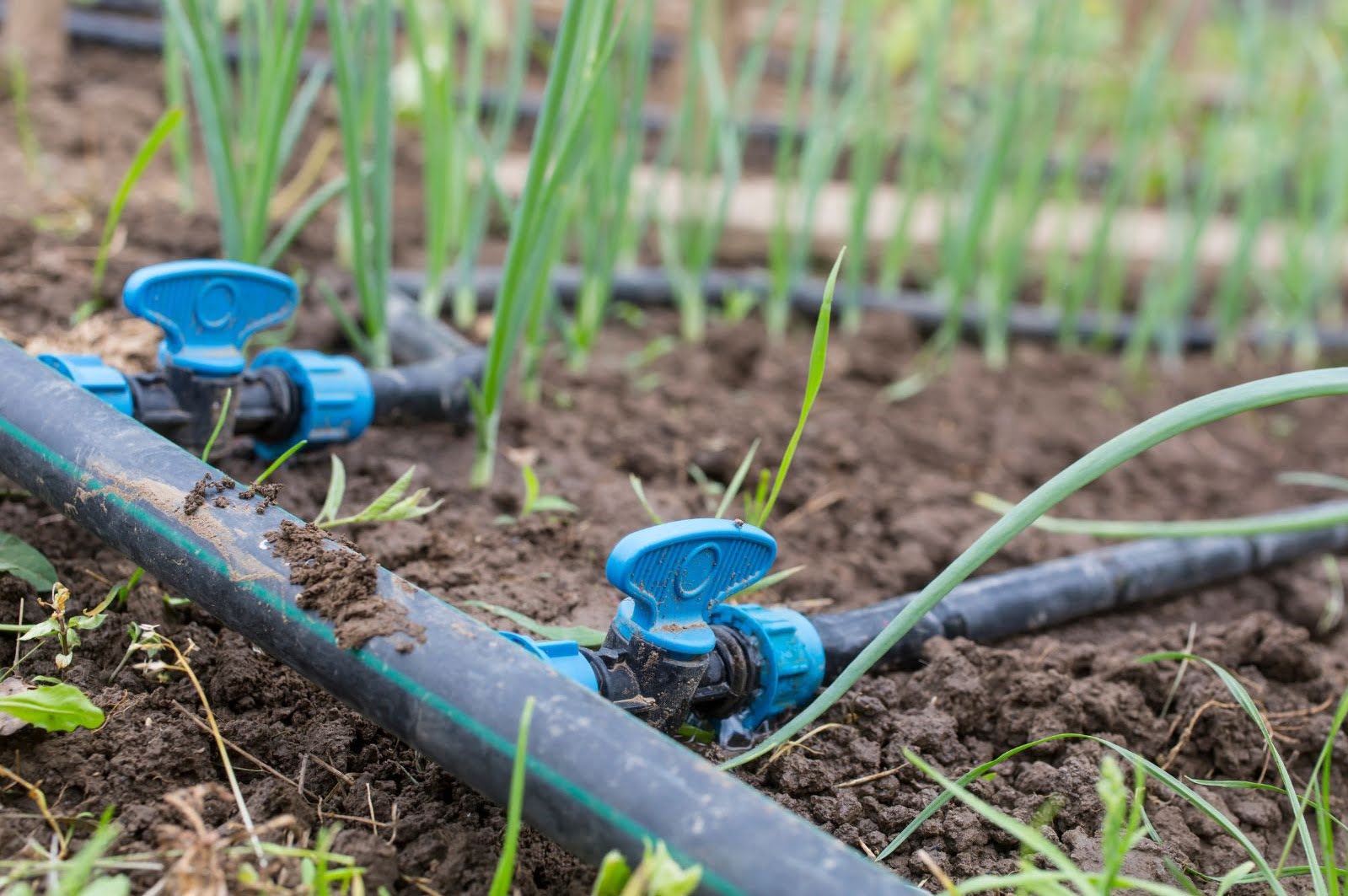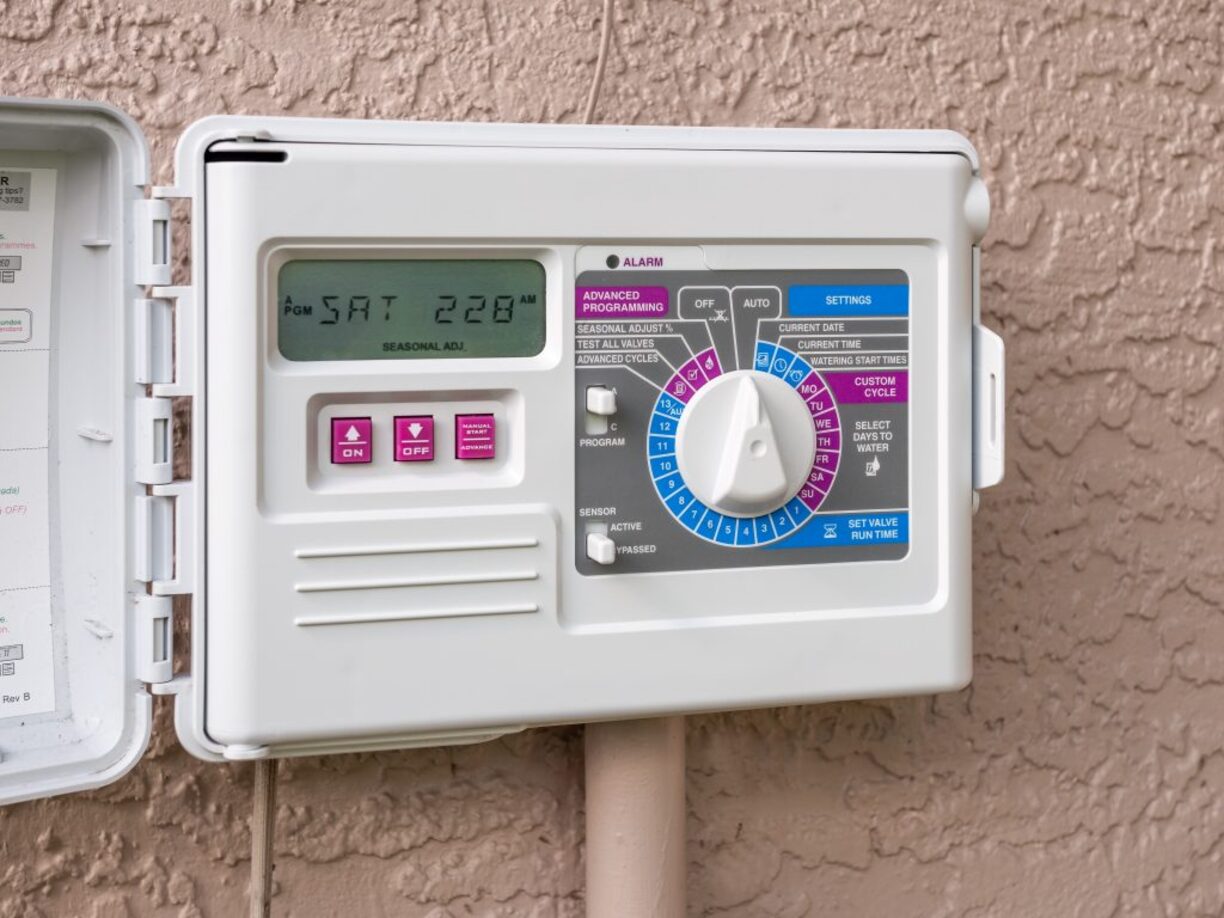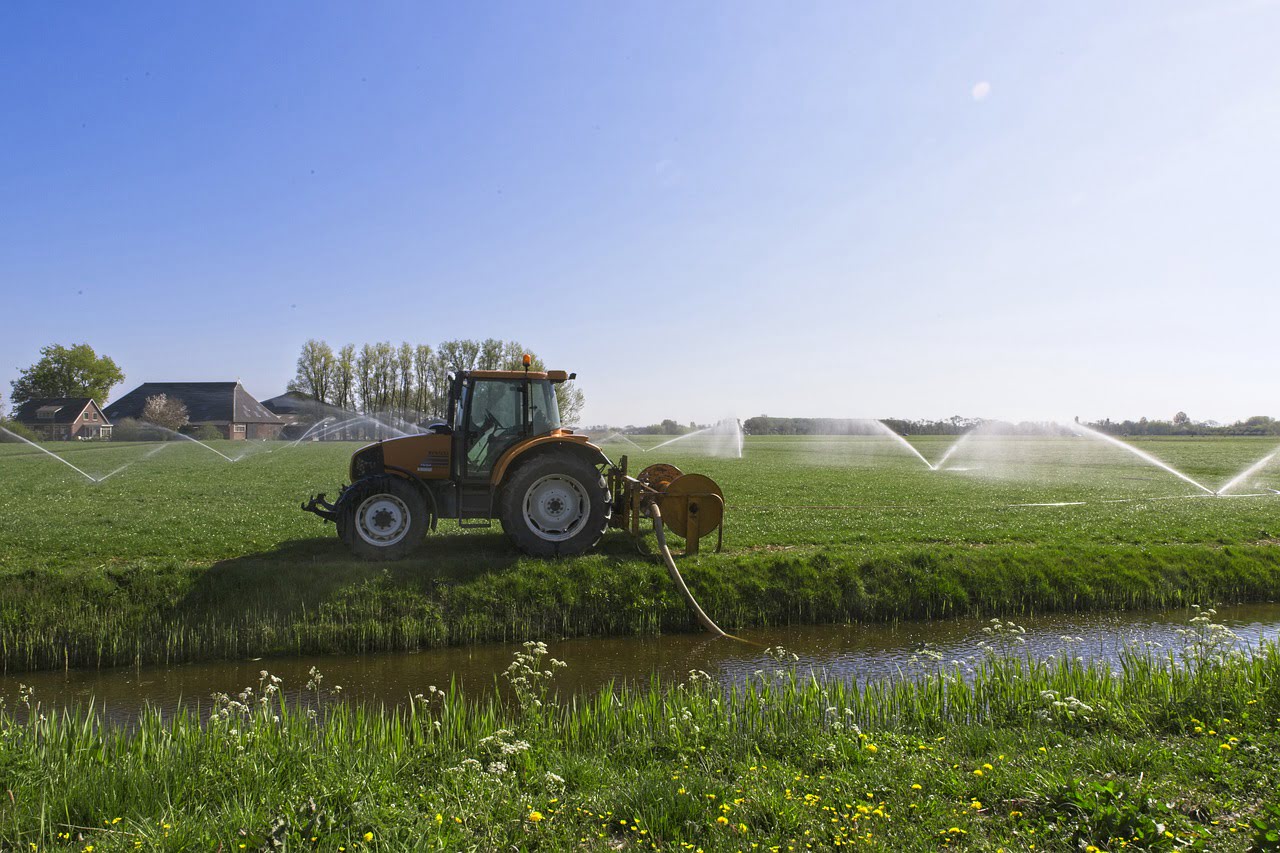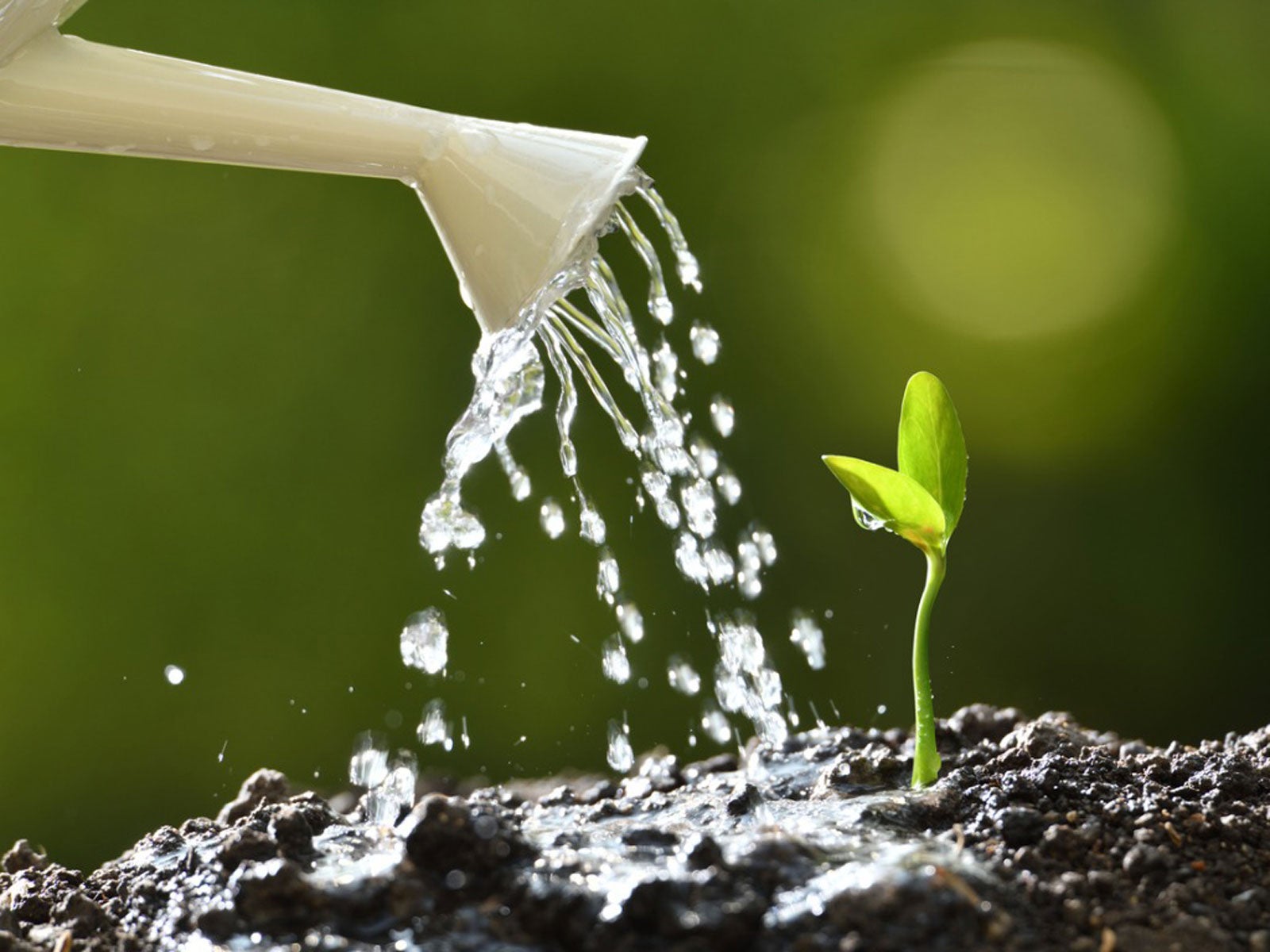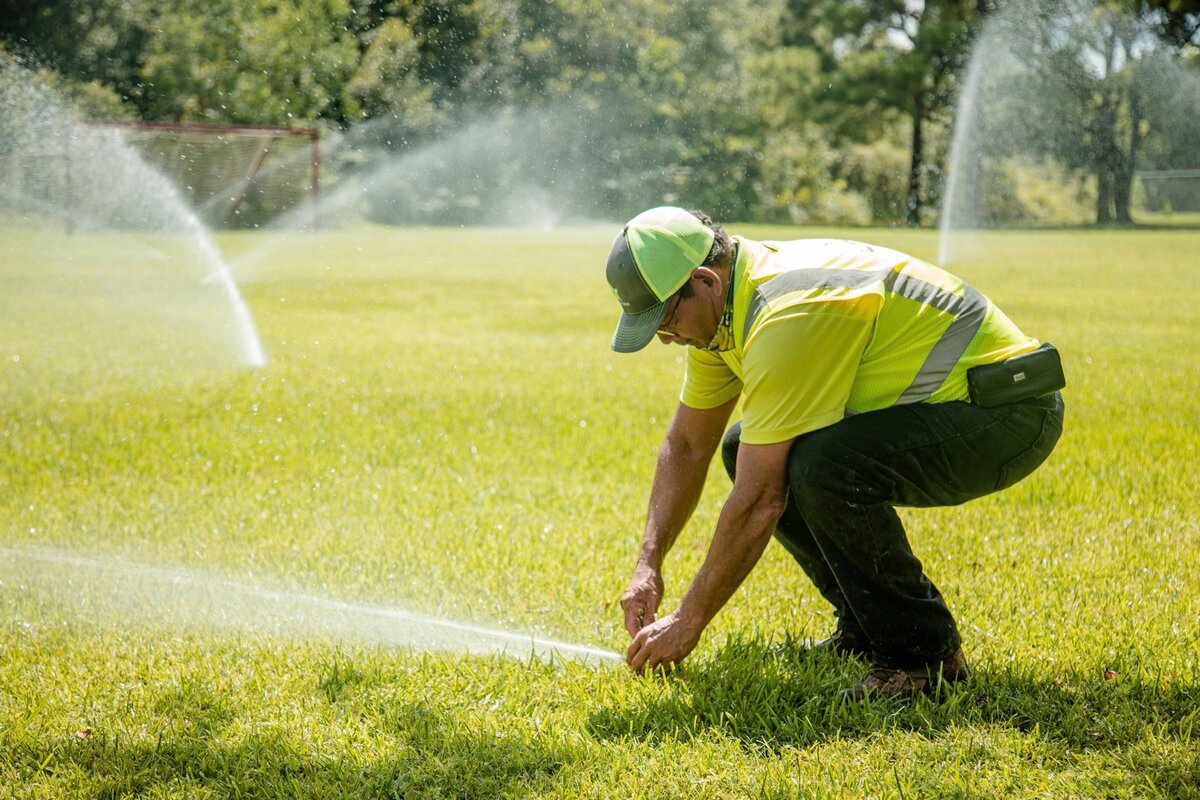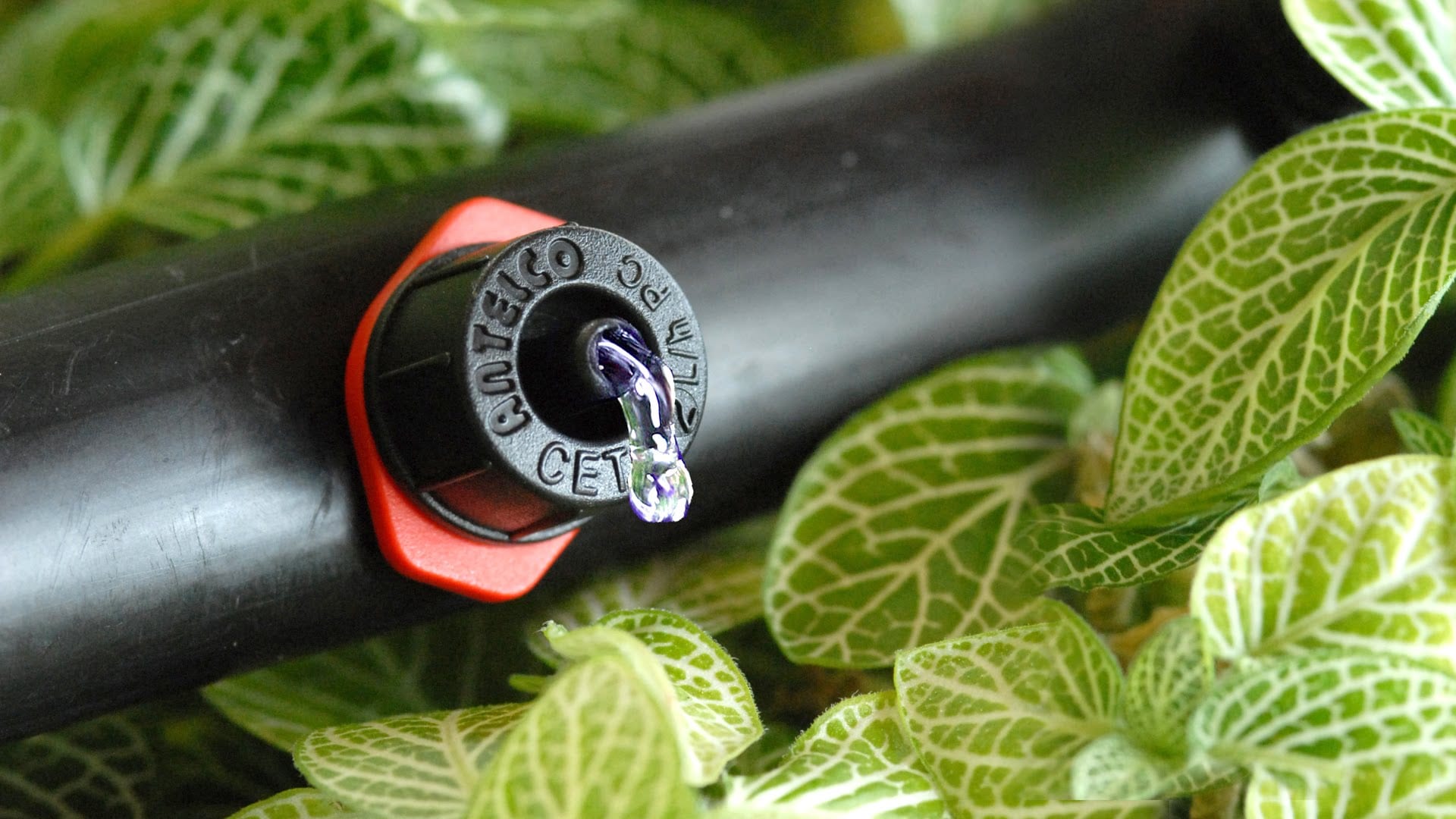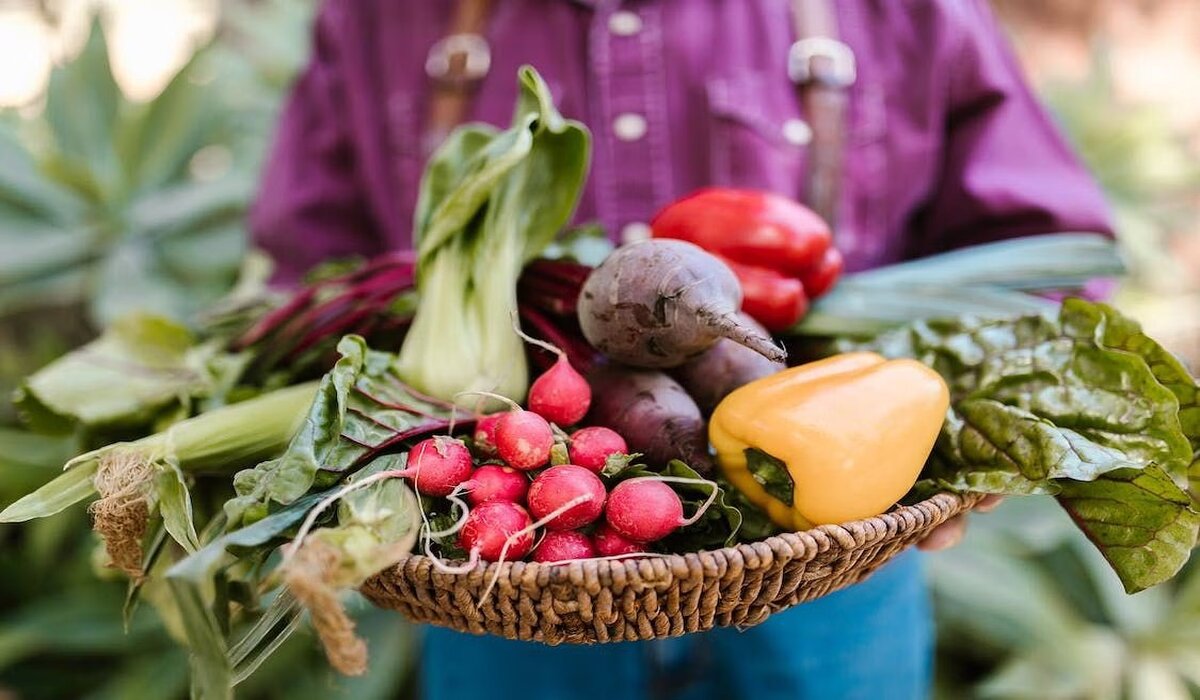Home>Gardening News and Trends>Latest News>Why Should You Do Drip Irrigation
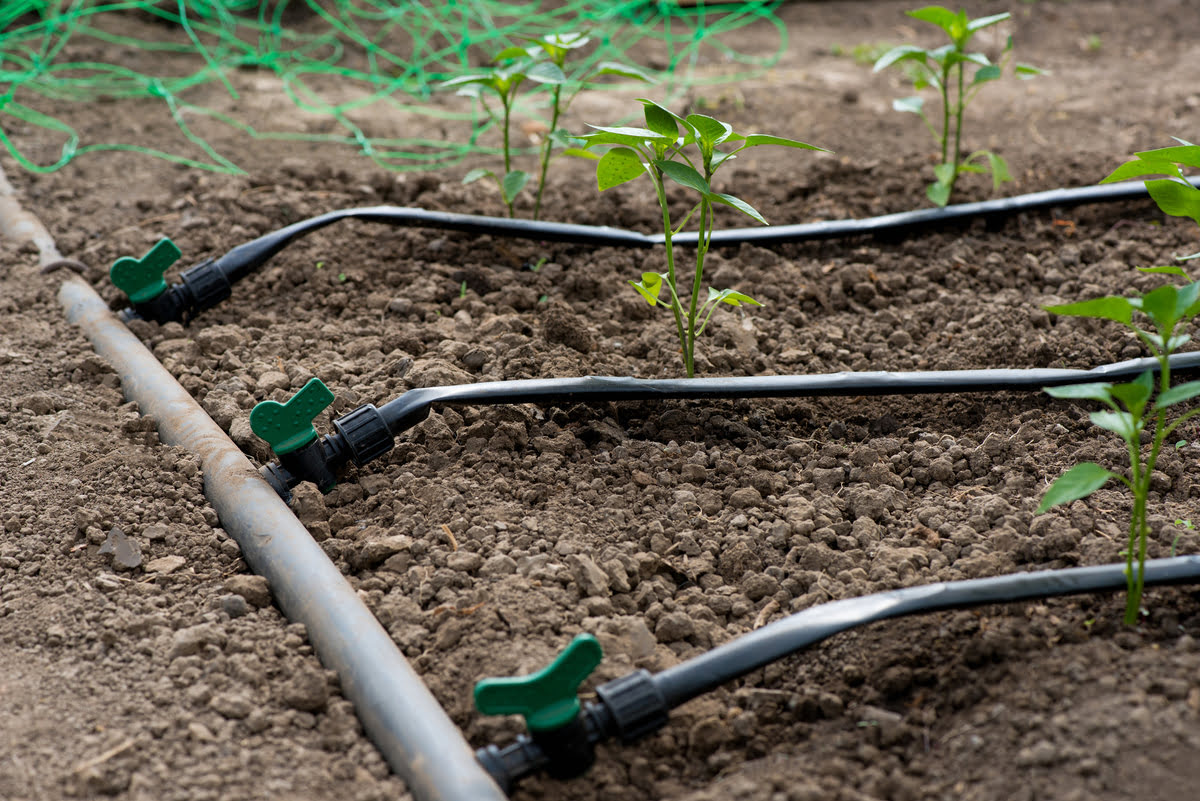

Latest News
Why Should You Do Drip Irrigation
Modified: January 22, 2024
Stay updated with the latest news on drip irrigation. Learn about the benefits and advancements in drip irrigation systems for efficient water management.
(Many of the links in this article redirect to a specific reviewed product. Your purchase of these products through affiliate links helps to generate commission for Chicagolandgardening.com, at no extra cost. Learn more)
Table of Contents
- Introduction
- Definition of Drip Irrigation
- Benefits of Drip Irrigation
- Water Conservation
- Increased Crop Yield
- Efficient Nutrient Delivery
- Weed Control
- Reduced Soil Erosion
- Cost Savings
- Application of Drip Irrigation
- Agriculture
- Landscaping and Gardening
- Greenhouses and Nurseries
- Challenges of Drip Irrigation
- Maintenance and Monitoring
- Initial Setup and Investment
- Quality Control
- Conclusion
Introduction
Drip irrigation is an innovative and efficient method of delivering water directly to the roots of plants, resulting in significant water and resource conservation. This irrigation technique has gained popularity in various sectors, including agriculture, landscaping, and gardening, due to its numerous benefits and positive impact on crop yield.
Unlike traditional irrigation methods, such as sprinkler systems or flood irrigation, which distribute water over the entire surface area, drip irrigation targets specific plants or crops and delivers water directly to their roots. This precise and controlled delivery conserves water by minimizing evaporation and reducing wastage. In addition, this method allows for better utilization of resources like fertilizers and nutrients.
Additionally, drip irrigation helps achieve better weed control, leading to healthier plant growth and improved crop yield. The gradual and consistent supply of water and nutrients to the plants promotes root development and enhances growth. As a result, farmers and gardeners have experienced increased productivity and improved quality of their crops and plants.
This article will delve into the various benefits of drip irrigation, its applications in different sectors, as well as the challenges involved in its implementation and maintenance.
Definition of Drip Irrigation
Drip irrigation, also known as micro-irrigation or trickle irrigation, is a watering method that involves delivering water slowly and directly to the base of plants through a network of tubes or pipes with emitters at regular intervals. It is a precise and efficient irrigation technique that ensures water is targeted only where it is needed.
In a drip irrigation system, water is supplied at a low pressure, allowing it to drip slowly and steadily onto the roots of plants. This gradual water application prevents water runoff and minimizes evaporation, leading to significant water savings compared to conventional irrigation methods.
The core components of a drip irrigation system include the main water supply line, which is connected to a water source, such as a faucet or a water storage tank. From the main line, smaller lateral lines or tubing are installed, which deliver water to the individual plants or crops through emitters or drippers. These emitters control the flow rate of water, ensuring a consistent and uniform distribution across the field or garden.
Drip irrigation systems can be configured in various ways to accommodate different crop layouts and watering requirements. They can be designed as surface systems, with tubing running along the ground, or as subsurface systems, with tubes buried below the soil surface. This flexibility allows for customization based on the specific needs of the plants and the terrain.
Overall, the defining characteristic of drip irrigation is its ability to deliver water directly to the plant roots, minimizing water loss and maximizing efficiency. This precise control over water placement ensures that only the plants receive the necessary moisture, reducing the risk of water-related diseases and optimizing plant growth.
The next sections will explore the numerous benefits associated with drip irrigation and its applications in different sectors.
Benefits of Drip Irrigation
Drip irrigation offers a wide range of benefits, making it an increasingly popular choice for farmers, gardeners, and landscapers. Let’s explore some of the key advantages:
- Water Conservation: One of the most significant advantages of drip irrigation is its ability to conserve water. By delivering water directly to the plant roots, drip irrigation minimizes evaporation and eliminates water wastage. Compared to traditional irrigation methods, studies have shown that drip irrigation can reduce water usage by up to 50%, resulting in substantial water savings over time.
- Increased Crop Yield: Drip irrigation promotes healthier plant growth and improved crop yields. The controlled delivery of water and nutrients directly to the roots ensures that plants receive optimal hydration and nourishment. This results in stronger root systems, enhanced nutrient uptake, and healthier plants, leading to increased productivity and higher crop yields.
- Efficient Nutrient Delivery: Alongside water, drip irrigation systems can also deliver fertilizers and other nutrients directly to the plant roots. This targeted delivery ensures that the nutrients are effectively absorbed by the plants, reducing nutrient leaching and increasing nutrient efficiency. As a result, plants receive the necessary nutrients for optimal growth, leading to better-quality crops.
- Weed Control: Drip irrigation has proven effective in controlling weeds. By delivering water only to the plant roots and not to the surrounding areas, drip irrigation discourages weed growth. Furthermore, the continuous and uniform moisture distribution prevents weeds from germinating and competing with crops for resources, reducing the need for manual weeding or herbicides.
- Reduced Soil Erosion: Drip irrigation minimizes soil erosion by regulating the flow of water and preventing excessive runoff. Unlike traditional irrigation methods that often result in water pooling and runoff, drip irrigation delivers water in a slow and controlled manner, allowing the soil to absorb the moisture gradually. This reduces soil erosion and helps maintain soil structure and fertility.
- Cost Savings: While the initial setup cost of a drip irrigation system may be higher than traditional irrigation methods, it offers long-term cost savings. The significant reduction in water usage leads to lower water bills, while improved crop yields increase profitability. Additionally, the precise application of water and nutrients reduces fertilizer and pesticide waste, saving on input costs.
The benefits of drip irrigation extend beyond water conservation and improved crop yield. Its efficiency and versatility make it suitable for various applications, including agriculture, landscaping, and greenhouse cultivation. The following sections will explore the specific uses of drip irrigation in these sectors.
Water Conservation
Water scarcity is a global concern, and efficient water management is becoming increasingly important. Drip irrigation stands out as a highly effective method for conserving water in various sectors, including agriculture, landscaping, and gardening. Here’s how drip irrigation helps in water conservation:
Reduced Water Usage: Drip irrigation delivers water directly to the roots of plants, minimizing water loss through evaporation. Unlike traditional irrigation methods, where water is sprayed or flooded over a wide area, drip irrigation ensures water is targeted only where it is needed. This precise water application reduces water wastage and significantly lowers water usage. Studies have shown that drip irrigation can save up to 50% more water compared to other irrigation techniques.
Minimized Runoff and Erosion: Traditional irrigation methods often result in water runoff and soil erosion, especially on sloping terrains. However, drip irrigation applies water slowly and at a low pressure, allowing the soil to absorb it gradually. This reduces the chances of runoff and minimizes soil erosion, preserving the integrity and fertility of the soil.
Preservation of Water Resources: By conserving water through drip irrigation, the strain on water sources, such as rivers, lakes, and groundwater, is reduced. This promotes sustainable water management and helps preserve these valuable resources for future generations.
Protection Against Drought: Drip irrigation is particularly beneficial during periods of drought or water restrictions. Its efficient water delivery system ensures that plants receive the necessary moisture, even when water resources are limited. This helps to maintain crop production and preserve plant health during challenging times.
Precise Water Distribution: Drip irrigation allows for precise control over water distribution, ensuring that water is delivered at the plant’s root zone. This eliminates wasteful watering of non-essential areas, such as pathways or unplanted spaces, further conserving water.
Efficient Water Management: Drip irrigation systems can be equipped with sensors, timers, and moisture controllers that optimize water usage. These tools monitor soil moisture levels and adjust the watering schedule accordingly, preventing overwatering and reducing water waste.
Environmental Impact: Conserving water through drip irrigation has a positive impact on the environment. By reducing water usage, less energy is required for water pumping and treatment. Additionally, the decreased need for chemical fertilizers and pesticides, often used in conventional irrigation methods, aids in minimizing potential water pollution.
Drip irrigation’s water conservation benefits extend beyond agricultural applications. In landscaping and gardening, drip irrigation systems allow precise watering of plants, avoiding unnecessary water usage on pathways and non-plant areas. Overall, drip irrigation serves as a valuable tool in sustainable water management practices, contributing to the conservation of this vital resource.
Increased Crop Yield
Drip irrigation has proven to be instrumental in boosting crop yield and enhancing agricultural productivity. The controlled delivery of water and nutrients directly to the plant roots brings several benefits that contribute to increased crop yield. Let’s explore some of them:
Optimal Moisture Management: Drip irrigation provides plants with a consistent and uniform supply of moisture directly to their root zones. This precise water application ensures that plants receive the necessary hydration without being subjected to water stress or excessive moisture. By maintaining optimal soil moisture levels, drip irrigation supports healthy plant growth, enabling crops to reach their full potential.
Better Nutrient Uptake: Along with water, drip irrigation efficiently delivers fertilizers and other nutrients directly to the plant roots. This targeted nutrient delivery ensures that plants can absorb the necessary elements for growth and development. As a result, crops can access essential nutrients more effectively, leading to improved nutrient uptake, healthier plants, and increased yields.
Reduced Weed Competition: Drip irrigation’s precise water application helps in weed control by minimizing water availability to weed seeds and reducing their germination. Additionally, the targeted watering reduces weed growth around desirable plants, reducing competition for nutrients and resources. This allows crops to receive the maximum benefit from available resources and eliminates the need for extensive manual weeding.
Promotion of Root Development: Drip irrigation encourages healthy root development by ensuring that water and nutrients are delivered directly to the root zone. With the continuous supply of moisture and nutrients, plants develop stronger and more extensive root systems. Robust roots not only anchor plants firmly in the soil but also enable them to access water and nutrients from deeper layers, contributing to improved crop growth and yield.
Minimized Plant Stress: Water stress can lead to reduced crop productivity and lower yields. Drip irrigation helps to prevent water stress by continuously supplying moisture to plants, even during dry periods. This stable water availability reduces the risk of drought stress, ensuring that crops can withstand challenging environmental conditions and maintain optimal growth and productivity.
Efficient Use of Resources: With drip irrigation, resources like water and fertilizers are used more efficiently. The precise application of water prevents wastage and runoff, ensuring that plants receive the right amount of moisture without excess. Similarly, by directly applying nutrients to the root zone, there is less loss through leaching or volatilization. This efficient resource utilization enhances crop health, minimizes environmental impact, and promotes sustainable agricultural practices.
The increased crop yield achieved through drip irrigation has significant implications for food production, economic sustainability, and global food security. By utilizing this efficient irrigation method, farmers can maximize their yields, optimize land usage, and contribute to meeting the growing demands for food worldwide.
Efficient Nutrient Delivery
Drip irrigation not only conserves water but also offers significant advantages in terms of nutrient delivery to plants. The precise and targeted nature of this irrigation method ensures efficient utilization of fertilizers and nutrients, resulting in improved plant health and higher crop yields. Here’s how drip irrigation facilitates efficient nutrient delivery:
Direct Delivery to the Root Zone: Unlike conventional irrigation methods, which can lead to nutrient leaching and runoff, drip irrigation delivers fertilizers and nutrients directly to the plant’s root zone. The emitters or drippers in the system supply the nutrients alongside the water, allowing them to be absorbed directly by the roots. This targeted delivery minimizes nutrient loss and ensures that plants receive the maximum benefit from the applied fertilizers.
Reduced Nutrient Waste: Drip irrigation systems are designed to deliver the precise amount of water and nutrients needed by each plant. This controlled application prevents excess nutrients from being applied, reducing the risk of leaching and contamination of groundwater or water bodies. Consequently, drip irrigation helps minimize nutrient waste and promotes responsible nutrient management.
Enhanced Nutrient Uptake: By delivering nutrients directly to the root zone, drip irrigation optimizes the availability of essential elements for plant uptake. The steady and consistent supply of nutrients ensures that plants can absorb them efficiently, maximizing their uptake and utilization. As a result, crops receive the necessary nutrients for healthy growth, leading to increased yields and improved crop quality.
Customizable Nutrient Delivery: Drip irrigation systems can be customized to meet specific crop nutrient requirements. Different crops have varying nutrient needs at different growth stages. With drip irrigation, farmers can tailor the nutrient delivery schedule according to the specific requirements of each crop. This flexibility allows for precision in nutrient management, ensuring that plants receive the right nutrients at the right time, contributing to optimal growth and development.
Sustainable Fertilizer Use: Efficient nutrient delivery through drip irrigation promotes sustainable fertilizer use. The targeted delivery of nutrients preserves the integrity of the soil ecosystem, minimizing the risk of nutrient runoff and environmental pollution. By precisely providing the required nutrients to the plants, drip irrigation minimizes excess fertilizer use, reduces fertilizer costs, and helps maintain soil fertility over the long term.
Improvement in Crop Quality: Proper nutrient delivery plays a crucial role in the quality of crops. Drip irrigation facilitates the balanced and consistent supply of nutrients, including essential elements such as nitrogen, phosphorus, and potassium. This balanced nutrition promotes healthy plant growth, disease resistance, and improved crop quality, ultimately benefiting farmers and consumers.
Efficient nutrient delivery is a key advantage of drip irrigation, complementing its water-saving capabilities. By optimizing fertilizer use and ensuring that plants receive the nutrients they need, drip irrigation contributes to sustainable agriculture practices, increased crop yields, and the overall success of farming operations.
Weed Control
Drip irrigation is a powerful ally in the battle against weeds. Its precise water delivery system significantly reduces weed growth and helps maintain weed-free fields and gardens. Here’s how drip irrigation benefits weed control:
Localized Watering: Unlike traditional irrigation methods that spray water over a wide area, drip irrigation delivers water directly to the base of plants. This localized watering approach restricts water availability to the desired plants, making it difficult for weed seeds to germinate and thrive. By limiting water access to weed seeds, drip irrigation minimizes weed growth and competition for resources.
Reduced Weed Seed Dispersal: Traditional irrigation methods, such as sprinklers or flood irrigation, can inadvertently spread weed seeds across a field or garden. Drip irrigation, on the other hand, applies water precisely to the root zones of plants, reducing the chance of weed seed dispersal. This targeted watering helps contain weed growth and prevents the spread of weeds throughout the growing area.
Consistent Moisture Levels: Drip irrigation provides a consistent and controlled moisture supply to the plants, preventing dry spells that can encourage weed growth. By maintaining optimal soil moisture levels, the growth conditions become less favorable for weeds, reducing their ability to establish and proliferate.
Reduced Soil Disturbance: Conventional tillage methods used to control weeds can disturb the soil, inadvertently exposing dormant weed seeds to sunlight and promoting their germination. Drip irrigation reduces the need for frequent tillage, as it targets water directly to the plant roots without disturbing the surrounding soil. By minimizing soil disturbance, drip irrigation helps to maintain weed seed dormancy and prevent unnecessary weed growth.
Decreased Competition for Resources: Weeds compete with crops for essential resources such as water, light, and nutrients. Drip irrigation ensures that water is delivered directly to the crop plants, reducing the water available to weed seeds and hindering their growth. The controlled water application of drip irrigation helps crops receive the necessary resources for optimal growth, minimizing competition with weeds.
Reduced Reliance on Herbicides: The targeted nature of drip irrigation reduces the reliance on herbicides for weed control. With the implementation of drip irrigation, farmers can reduce or eliminate the need for herbicide applications, minimizing chemical usage and potential environmental impacts. This approach aligns with sustainable agricultural practices and reduces the potential buildup of herbicide-resistant weed populations.
Time and Labor Savings: Drip irrigation can significantly reduce the time and effort required for manual weed control. The localized watering limits weed growth, resulting in fewer weeds to remove manually. This saves valuable time and labor, allowing farmers and gardeners to focus on other essential tasks.
Drip irrigation serves as a valuable tool in weed control, improving the overall health and productivity of crops and garden plants. By reducing weed growth and competition, drip irrigation offers a more efficient and sustainable approach to maintaining weed-free growing environments.
Reduced Soil Erosion
Soil erosion is a major environmental concern that can have detrimental effects on agricultural productivity and ecosystem health. Drip irrigation plays a vital role in reducing soil erosion and preserving the integrity of the soil. Here’s how drip irrigation helps in mitigating soil erosion:
Controlled Water Application: Drip irrigation delivers water directly to the root zone of plants in a slow and controlled manner. Unlike traditional irrigation methods that may result in water pooling and runoff, drip irrigation ensures that water is applied at a rate that the soil can absorb. This controlled water application reduces the impact of water runoff, minimizing soil erosion.
Preservation of Soil Structure: The gentle and consistent supply of water provided by drip irrigation maintains soil structure and integrity. Traditional irrigation methods, such as flood irrigation or sprinklers, can dislodge soil particles and lead to soil compaction. Drip irrigation, on the other hand, limits soil disturbance, allowing the soil to retain its natural structure and preventing erosion from occurring.
Prevention of Surface Crusting: Heavy rainfall or improper irrigation practices can lead to soil surface crusting, making it difficult for water to infiltrate the soil. Drip irrigation minimizes the risk of surface crusting by supplying water directly to the root zone, bypassing the soil surface. This promotes better water absorption, reducing the chance of runoff and erosion.
Minimized Water Runoff: Excessive water runoff can not only lead to soil erosion but also results in nutrient leaching and loss of valuable topsoil. Drip irrigation’s localized water application reduces the volume and velocity of runoff, preventing soil particles and nutrients from being washed away. By minimizing water runoff, drip irrigation helps maintain soil fertility and prevents the loss of essential nutrients.
Flexibility of System Placement: Drip irrigation allows for precise placement of emitters, enabling irrigation directly at the base of the plants. This eliminates the need for water to flow across the soil surface, reducing the risk of erosion caused by water movement. The ability to position the irrigation system strategically further contributes to a significant reduction in soil erosion.
Preservation of Sloping Areas: Sloping terrains are particularly susceptible to soil erosion. Drip irrigation can be designed to accommodate these challenging landscapes, ensuring that water is properly distributed and absorbed by the soil. By preventing excessive water runoff and maintaining soil moisture balance, drip irrigation helps preserve the integrity of sloping areas and mitigates soil erosion risks.
Long-term Soil Conservation: The reduction in soil erosion achieved through drip irrigation has long-term benefits for soil conservation. By minimizing erosion, valuable topsoil is preserved, maintaining its nutrient content and structure. Healthy and fertile soil is essential for sustained agricultural productivity and ecological balance.
Drip irrigation serves as an effective tool in reducing soil erosion and protecting valuable soil resources. By carefully managing water application and preserving the integrity of the soil, drip irrigation contributes to sustainable agriculture practices, safeguarding soil health for future generations.
Cost Savings
Drip irrigation offers significant cost savings for farmers, gardeners, and landscapers. While the initial setup cost may be higher compared to conventional irrigation methods, the long-term benefits and cost reductions make drip irrigation a worthwhile investment. Here are some ways in which drip irrigation helps save costs:
Water Savings: Drip irrigation is designed to deliver water directly to the plant roots, minimizing water loss through evaporation and runoff. Studies have shown that drip irrigation can reduce water usage by up to 50% compared to traditional irrigation methods. With reduced water usage, farmers can expect significant savings on water bills, especially in regions where water is scarce or expensive.
Energy Savings: By conserving water, drip irrigation also leads to energy savings. Traditional irrigation methods require pumping and distributing large volumes of water, consuming a considerable amount of energy. Drip irrigation’s targeted and efficient water delivery system reduces the energy requirement, resulting in lower energy costs and reduced environmental impact.
Fertilizer Efficiency: Drip irrigation delivers water and nutrients directly to the plant roots, ensuring efficient absorption by the plants. The precise application of fertilizers minimizes wastage and reduces the need for excessive fertilizer use. This leads to cost savings on fertilizer expenses and helps prevent nutrient runoff, which can be harmful to the environment.
Disease and Pest Control: Drip irrigation promotes healthier plant growth and improved crop yield. When plants are properly hydrated and supplied with nutrients, they become more resistant to diseases and pests. This reduces the need for costly treatments and pesticides, resulting in savings on crop protection measures.
Labour Savings: Drip irrigation requires less manual labor compared to traditional irrigation methods. Once the system is properly installed, it operates efficiently without frequent adjustments or monitoring. The targeted watering also reduces weed growth, minimizing the need for manual weeding. These labor-saving benefits free up time and resources for other essential farming tasks.
Increased Crop Yield: Drip irrigation offers the potential for increased crop yields and improved crop quality. By providing optimal moisture and nutrient levels directly to the plant roots, drip irrigation creates ideal growing conditions. This increased productivity and improved crop quality translate into higher market value and profitability, offsetting the initial setup costs of the system.
Longevity and Durability: Drip irrigation systems are built to last. The components, such as pipes, emitters, and filters, are designed to withstand various environmental conditions and can last for several years with proper maintenance. As a result, farmers and gardeners can benefit from the long lifespan of drip irrigation systems, reducing the need for frequent replacements and saving on equipment costs in the long run.
Optimized Land Usage: Drip irrigation allows for more efficient use of available land. With precise water and nutrient delivery, plants can be grown in a closer spacing pattern, maximizing the use of available growing space. This leads to higher plant density per unit area, enabling farmers to make the most of their land resources and potentially increase their crop yield per acre.
While the initial investment in drip irrigation may require some upfront costs, the long-term savings and benefits it offers make it a cost-effective choice. From water and energy savings to improved crop yields and reduced labor, drip irrigation has a positive impact on the bottom line while promoting sustainable and efficient agricultural practices.
Application of Drip Irrigation
Drip irrigation is a versatile and efficient method of irrigation that can be applied across various sectors. Its targeted and controlled water delivery system makes it suitable for diverse applications, including agriculture, landscaping, and greenhouse cultivation. Let’s explore the different areas where drip irrigation finds its application:
Agriculture: Drip irrigation has a significant impact on agricultural practices. It is widely used in row crops, such as vegetables, fruits, vineyards, and orchards. Drip irrigation systems can be customized to meet the specific water and nutrient requirements of different crops. By delivering water directly to the plant roots, drip irrigation ensures uniform moisture distribution, optimal nutrient uptake, and effective water management. This promotes healthy plant growth, higher crop yields, and improved fruit quality.
Landscaping and Gardening: Drip irrigation is an efficient way to water landscapes, gardens, and residential lawns. Its precise water application helps maintain lush and healthy plants, even in limited spaces. Drip irrigation systems can be easily installed in garden beds, containers, or hanging baskets, delivering water directly to the root zones of plants. This targeted watering minimizes water waste, prevents overwatering, and reduces weed growth, making it an ideal choice for efficient and sustainable landscaping practices.
Greenhouses and Nurseries: Drip irrigation is widely used in greenhouse and nursery operations. The controlled water delivery system allows for easy management of water consumption and nutrient uptake in a controlled environment. Drip irrigation ensures that young plants, seedlings, and delicate flowers receive the right amount of water and nutrients without the risk of overwatering or water stress. This precision watering promotes healthy growth, reduces disease incidence, and enhances crop quality in these controlled growing environments.
Ornamental and Turf Applications: Drip irrigation systems are commonly employed in the maintenance of ornamental landscapes, public parks, and sports fields. Drip irrigation can be used to water trees, shrubs, flower beds, and lawns, ensuring that water is delivered directly to the root zones. This efficient watering method minimizes water loss and promotes healthy plant growth while reducing weed growth and water runoff. The flexibility of drip irrigation allows for easy installation and integration with existing landscape designs.
High-Wind or Sloping Areas: Drip irrigation is particularly beneficial in areas prone to high winds or slopes. Traditional irrigation methods, such as sprinklers, are inefficient in such conditions, as wind can disperse water away from the target area, and water flow can be affected by gravity on slopes. Drip irrigation overcomes these challenges by delivering water directly to the roots, minimizing wastage and ensuring optimal water utilization and plant health.
Water-Sensitive Environments: Drip irrigation is an ideal choice in water-sensitive environments, such as water-restricted areas or regions with limited water resources. Drip irrigation allows for the precise application of water, minimizing water usage while maintaining healthy plant growth and crop productivity. This not only conserves water but also helps comply with water regulations and promotes sustainable water management practices.
The application of drip irrigation extends beyond these examples, as its adaptable design and efficiency make it suitable for various other contexts. The flexibility and benefits of drip irrigation make it an indispensable tool for water conservation, efficient resource management, and sustainable growth in different sectors.
Agriculture
Drip irrigation has revolutionized agricultural practices and transformed the way crops are grown. Its precise and efficient water delivery system has numerous benefits that make it highly valuable in the field of agriculture. Let’s explore how drip irrigation is applied in agriculture:
Row Crops: Drip irrigation is widely used for irrigating row crops, including vegetables, fruits, vineyards, and orchards. The ability to deliver water directly to the root zone of each plant ensures efficient water utilization and optimal nutrient uptake. Drip irrigation systems can be tailored to meet the specific water needs of different crops, accounting for factors such as crop type, growth stage, and soil conditions. This targeted application enhances plant growth, increases crop yields, and improves the overall quality of fruits and vegetables.
Water Management: Crop water management is critical for agricultural success. Drip irrigation allows precise control over the amount and timing of water application, ensuring that plants receive the required moisture without waterlogging or drought stress. Sensors and moisture controllers can be integrated into drip irrigation systems to monitor soil moisture levels and adjust watering schedules accordingly. This optimization of water management minimizes water waste and ensures the efficient use of this valuable resource.
Fertilizer Application: Along with water, drip irrigation systems are capable of delivering fertilizers and nutrients directly to the root zone of plants. This enables precise nutrient application, ensuring that crops receive the required nourishment for healthy growth. Customizable fertilizer injection systems allow for accurate nutrient dosing tailored to specific crop needs. The efficient nutrient delivery through drip irrigation reduces fertilizer waste, enhances nutrient uptake, and improves overall crop productivity.
Water Conservation: Water scarcity is a significant concern in agriculture. Drip irrigation significantly reduces water usage by delivering water only to the plant roots, minimizing evaporation and eliminating water runoff. Compared to traditional irrigation methods, drip irrigation can save up to 50% more water. The water conservation benefits of drip irrigation contribute to sustainable agriculture practices, enabling farmers to optimize water resources and mitigate the impact of water scarcity.
Improved Crop Quality: Drip irrigation’s ability to provide precise water and nutrient delivery contributes to improved crop quality. The controlled and consistent supply of water and nutrients directly to the root zone ensures that crops receive the ideal growing conditions. This promotes healthier plant growth, increased disease resistance, and enhanced crop quality. The improvement in crop quality not only benefits farmers by fetching higher market prices but also satisfies consumer demands for top-quality produce.
Environmental Stewardship: Drip irrigation aligns with sustainable agricultural practices and environmental stewardship. By minimizing water usage, reducing nutrient runoff, and preventing soil erosion, drip irrigation helps preserve water resources and protect the environment. This reduces the impact on water bodies, prevents groundwater contamination, and contributes to the conservation of soil quality, maintaining long-term agricultural sustainability.
Drip irrigation has transformed agricultural practices by revolutionizing water management, optimizing resource utilization, and enhancing crop productivity. Its application in agriculture ensures efficient water and nutrient delivery, minimizes environmental impact, and plays a crucial role in meeting the global demand for sustainable food production.
Landscaping and Gardening
Drip irrigation is a valuable and efficient method for watering landscapes, gardens, and residential lawns. Its precise and controlled water delivery system brings numerous benefits, making it an ideal choice for landscaping and gardening applications. Let’s explore how drip irrigation is applied in these contexts:
Precise Water Application: Drip irrigation allows for targeted water application directly to the root zones of plants. This precise watering ensures that plants receive the necessary moisture without wastage or runoff. Drip irrigation systems can be designed with different emitter types and spacing, allowing for customization based on plant water requirements and spacing patterns. This eliminates water waste and creates ideal growing conditions for plants, helping them thrive.
Water Efficiency: Drip irrigation is highly efficient in water usage compared to traditional overhead sprinkler systems. By delivering water directly to the root zones, drip irrigation minimizes evaporation and wind drift, resulting in significant water savings. For landscapes and gardens with limited water availability or in regions with water restrictions, drip irrigation ensures that water is utilized efficiently, promoting water conservation and sustainability.
Reduced Weed Growth: Drip irrigation’s targeted water delivery helps control weed growth in landscapes and gardens. By delivering water directly to the plant roots, drip irrigation limits water availability to weed seeds and reduces the likelihood of weed germination. This precision watering minimizes weed competition for resources, such as water and nutrients, allowing garden plants to thrive without unnecessary competition.
Sustainable Landscape Design: Drip irrigation systems can be easily integrated into various landscape designs, making them a sustainable choice for environmentally conscious gardeners and landscapers. The flexibility of drip irrigation allows for installation in garden beds, containers, hanging baskets, or even vertical gardens. This promotes efficient resource utilization, minimizes water waste, and reduces the need for chemical herbicides or pesticides.
Plant Health and Growth: Drip irrigation plays a crucial role in maintaining the health and growth of plants in landscapes and gardens. The precise delivery of water and nutrients directly to the root zones ensures that plants receive the right amount of moisture and nourishment. This optimal hydration and nutrition support robust root development, vigorous growth, and vibrant blooms, enhancing the overall beauty and aesthetics of landscapes and gardens.
Flexibility and Adaptability: Drip irrigation can be easily customized to accommodate the specific needs of different plants and garden layouts. Systems can be designed with adjustable emitters, enabling the flow rate and water distribution to be tailored for each plant. Drip irrigation is compatible with various soil types, including sandy, loamy, or clay soils, making it suitable for diverse landscaping and gardening applications.
Time and Labor Savings: Drip irrigation requires less manual labor compared to traditional watering methods. Once the system is properly installed, it operates autonomously, delivering water to plants at the desired rate and frequency. This eliminates the need for daily hand watering, saving valuable time and reducing the manual effort required to maintain a healthy landscape or garden.
Drip irrigation contributes to sustainable landscaping and gardening practices by optimizing water usage, promoting plant health, and minimizing the environmental impact. Whether in residential gardens, public parks, or commercial landscapes, drip irrigation is an efficient and effective choice for maintaining beautiful, vibrant, and water-efficient outdoor spaces.
Greenhouses and Nurseries
Drip irrigation plays a vital role in the success of greenhouse and nursery operations. Its efficient and targeted water delivery system meets the unique needs of these controlled environments, ensuring optimal plant growth, efficient resource management, and improved crop quality. Let’s explore how drip irrigation is applied in greenhouses and nurseries:
Precise Water and Nutrient Delivery: Drip irrigation systems provide precise water and nutrient delivery directly to the root zone of each plant. This targeted approach ensures that plants receive the necessary moisture and nutrients without waterlogging or nutrient leaching. The controlled delivery of water and nutrients improves the absorption efficiency and minimizes waste, resulting in healthier plants and better crop yields.
Optimized Growing Conditions: Drip irrigation allows growers to create the ideal moisture conditions for plants in greenhouses and nurseries. The ability to customize the rate and frequency of water delivery ensures that each plant receives the required amount of water. This precise control over watering helps prevent overwatering, mitigates the risk of disease, and creates an optimal growing environment for delicate seedlings, young plants, and flowering crops.
Uniform Moisture Distribution: Drip irrigation ensures even moisture distribution throughout the greenhouse or nursery. Consistent water delivery helps eliminate dry spots and promotes uniform plant growth. This is particularly important in larger operations where plants may be located at varying distances from the water source. With drip irrigation, every plant receives the same amount of water, enhancing crop uniformity and quality.
Save on Water and Fertilizer: Drip irrigation enables growers to conserve water and reduce fertilizer usage in greenhouse and nursery settings. The controlled water application minimizes water waste and limits the amount of water needed for irrigation. Additionally, drip irrigation systems can include nutrient injectors, allowing for precise delivery of fertilizers and other supplements directly to the plants. This efficient use of water and nutrients leads to cost savings and reduces the environmental impact of greenhouse and nursery operations.
Prevention of Disease Spread: Drip irrigation helps minimize the spread of diseases in greenhouses and nurseries by delivering water directly to the root zone, rather than wetting plant foliage. By keeping the foliage dry, drip irrigation reduces the humidity and moisture levels that can contribute to the development and spread of fungal diseases. This proactive approach to disease prevention helps maintain healthier plants and reduces the need for chemical treatments.
Flexibility and Scalability: Drip irrigation systems are flexible and scalable, making them adaptable to different greenhouse and nursery layouts and plant configurations. Drip lines or tapes can be easily installed on benches, along rows, or overhead, providing efficient water delivery to a variety of plants. The ability to customize the system to the specific needs of different crops makes drip irrigation an invaluable tool for greenhouse and nursery operations.
Increased Efficiency: Automation and scheduling capabilities can be integrated with drip irrigation systems in greenhouses and nurseries. This allows for precise control over watering schedules, ensuring plants receive water at the desired times and volumes. Automated drip irrigation systems save time and labor for growers, allowing them to focus on other critical tasks involved in managing a greenhouse or nursery operation.
In greenhouses and nurseries, where plant health and precise resource management are paramount, drip irrigation proves to be an indispensable tool. It provides precise water and nutrient delivery, creates optimal growing conditions, and promotes efficient resource utilization, contributing to successful and sustainable greenhouse and nursery operations.
Challenges of Drip Irrigation
Drip irrigation is a highly effective and efficient method of irrigation, but like any system, it faces certain challenges. It is important to be aware of these challenges to ensure successful implementation and maintenance of a drip irrigation system. Let’s explore some of the common challenges faced with drip irrigation:
Maintenance and Monitoring: Drip irrigation systems require regular maintenance and monitoring to ensure optimal performance. Emitters can become clogged with debris, mineral deposits, or root intrusion, leading to reduced water flow. Regular inspection and cleaning of emitters, filters, and other system components are necessary to prevent blockages and maintain proper water distribution.
Initial Setup and Investment: The installation of a drip irrigation system requires upfront investment in equipment, tubing, fittings, and controllers. Compared to traditional irrigation methods, the initial setup cost of a drip irrigation system is usually higher. However, the long-term benefits, such as water and fertilizer savings, improved crop yields, and reduced labor, often outweigh the initial investment.
Quality Control: Ensuring the quality and integrity of the components used in a drip irrigation system is crucial. Substandard materials or components can lead to system failures, leaks, or uneven water distribution. It is important to source high-quality equipment from reputable suppliers to ensure the system’s durability and reliability.
System Clogging: Drip irrigation systems are susceptible to clogging due to sediment, algae, or other small particles present in the water supply. Sediment filters and screen filters can help reduce clogging, but periodic cleaning may still be required. Regular system flushing and maintenance can help mitigate clogging issues and ensure consistent water flow throughout the system.
Pressure and Flow Variations: Drip irrigation systems are sensitive to pressure and flow fluctuations. Inconsistent water pressure or flow rates can result in unequal water distribution among plants or sections of the field. Pressure regulators and flow control valves can help manage these variations and ensure uniform water distribution along the entire system.
System Layout and Design: Proper system layout and design are crucial for the effective functioning of a drip irrigation system. Factors such as field topography, soil type, crop spacing, and water source availability must be carefully considered. Inadequate system design can lead to uneven water distribution, water wastage, or inadequate coverage, impacting crop growth and yield.
Root Intrusion: In some cases, plant roots can intrude and clog drip irrigation lines. This can occur when emitters are installed too close to the plants or when roots grow excessively. Proper spacing and regular monitoring of the system can help prevent root intrusion and maintain the efficient operation of the drip irrigation system.
Technology and Skill Requirements: Implementing and managing a drip irrigation system may require technical knowledge and skills. Understanding system components, water pressure, flow rates, and scheduling can be challenging for some farmers or gardeners. However, with proper training and guidance, these technicalities can be overcome, enabling users to maximize the benefits of the drip irrigation system.
With proper planning, design, and maintenance, these challenges can be effectively managed, ensuring the successful implementation and functioning of a drip irrigation system. The benefits of water conservation, improved crop yields, and efficient resource utilization make addressing these challenges worthwhile in the long run.
Maintenance and Monitoring
Maintenance and monitoring are essential aspects of ensuring the proper functioning and longevity of a drip irrigation system. Regular upkeep and diligent monitoring help prevent potential issues and maximize the system’s efficiency. Here are some key considerations for maintaining and monitoring a drip irrigation system:
Inspecting Emitters and Drippers: Emitters and drippers are critical components that deliver water to the plants. Regularly inspect them to ensure they are free from clogs or damage. Clear any debris or mineral deposits that may obstruct the water flow. Replace any damaged or worn-out emitters to maintain uniform water distribution.
Cleaning Filters: Filters are crucial for preventing debris and particles from clogging the system. Check and clean filters regularly to ensure uninterrupted water flow. Sediment filters and screen filters may require periodic cleaning to prevent blockages. Removing accumulated sediment, algae, or other contaminants enhances the system’s performance.
Flushing the System: Flushing the system periodically helps remove any sediment, dirt, or other materials that may accumulate within the pipes. Flushing prevents clogging and ensures proper water flow and uniform distribution. Adequate flushing also helps maintain system pressure and reduces the risk of blockages in the emitters or drippers.
Monitoring Water Pressure: Regularly monitor and maintain stable water pressure to ensure optimal system performance. Fluctuating water pressure can affect water distribution, leading to uneven watering or even system damage. Install pressure regulators or pressure-compensating emitters to manage pressure changes and maintain consistent water distribution.
Managing System Leakage: Inspect the system for any signs of leakage, such as wet spots, pooling water, or water leakage around fittings or joints. Leaks can result in water wastage, reduced system efficiency, and potential damage to surrounding structures or plant roots. Address any leaks promptly by replacing damaged components or tightening connections.
System Winterization: In regions with freezing temperatures, proper winterization is crucial to protect the system from damage. Empty all water from the system and ensure it is free from moisture to prevent freezing and cracking of pipes or emitters. Properly store and protect system components during the winter months to preserve their integrity for the following growing season.
Regular System Upkeep: Conduct routine maintenance checks, especially during peak irrigation seasons. Inspect the entire system, including tubing, connectors, valves, and fittings, for signs of wear, corrosion, or damage. Replace any damaged components promptly to prevent system malfunctions or inefficiencies.
Monitoring System Operation: Regularly monitor the system’s operation to ensure adequate water delivery and uniform distribution. Check that all emitters or drippers are functioning correctly and delivering the desired flow rate. Monitor soil moisture levels regularly to ensure plants receive optimal hydration. Adjust system scheduling and settings as needed based on weather conditions, plant requirements, and seasonal changes.
Training and Knowledge: Properly maintain and monitor a drip irrigation system by acquiring the necessary training and knowledge. Stay informed about the system’s components, functions, and potential issues. Stay updated with industry best practices and technological advancements to optimize system maintenance and ensure its long-term success.
By prioritizing maintenance and monitoring, growers can address potential problems early on, prevent system malfunctions, and maximize the benefits of drip irrigation. Regular upkeep and diligent monitoring contribute to the sustainability and efficiency of the system, leading to improved crop quality, water conservation, and long-term cost savings.
Initial Setup and Investment
The initial setup and investment associated with a drip irrigation system are important considerations for farmers, gardeners, and landscapers. While the upfront costs of installing a drip irrigation system may be higher compared to conventional irrigation methods, the long-term benefits and cost savings often outweigh the initial investment. Let’s explore the factors related to the initial setup and investment of a drip irrigation system:
Equipment and Components: The setup of a drip irrigation system involves acquiring the necessary equipment and components, such as tubing, emitters, connectors, filters, valves, and controllers. The quality and durability of these components are crucial for a reliable and long-lasting system. Investing in high-quality equipment ensures system efficiency and reduces the need for frequent replacements or repairs.
System Design and Layout: Proper system design and layout are essential for efficient water distribution and plant coverage. Customizing the system according to the specific needs of the area, soil type, crop type, and planting layout is crucial. This may involve working with professionals or consulting irrigation experts to design an optimal layout that minimizes water waste and maximizes irrigation efficiency.
Water Source and Supply: Assessing the available water source and supply is necessary during the setup of a drip irrigation system. Factors such as water quality, volume, and accessibility should be considered to determine the system’s capacity and compatibility. If the water quality is unsuitable for direct use, appropriate filtration or treatment systems may need to be integrated into the setup to prevent clogging or damage to the system.
Installation Labor: The installation of a drip irrigation system may require skilled labor, especially for larger areas or complex setups. Professional installation ensures proper assembly, connection, and calibration of the system components. While this may add to the initial investment cost, it ensures a well-functioning system from the start and minimizes the risk of installation errors that could lead to inefficiencies or system malfunctions.
Long-Term Cost Savings: Despite the initial investment, a drip irrigation system offers long-term cost savings. By providing precise water delivery to plant roots, drip irrigation significantly reduces water wastage and lowers water bills compared to traditional irrigation methods. Additionally, precise nutrient delivery optimizes fertilizer usage, reducing input costs. The improved crop health, increased yield, and reduced labor associated with drip irrigation also contribute to long-term cost savings and profitability.
Return on Investment (ROI): Consider the potential return on investment when evaluating the initial setup cost. Drip irrigation systems have been shown to provide a high return on investment by improving crop productivity, quality, and overall yield. The reduction in water and fertilizer usage, labor costs, and potential revenue increase from higher crop yields contribute to the system’s financial feasibility and eventual ROI.
Government Incentives and Support: Explore potential government incentives, grants, or support programs for adopting drip irrigation systems. In certain regions, there may be financial assistance or subsidies available to offset some of the initial setup costs. Research and consultation with local agricultural or horticultural agencies can provide insights into any available support programs.
While the initial setup cost of a drip irrigation system may require an investment of time and resources, the long-term benefits and cost savings make it a worthwhile endeavor. The enhanced water efficiency, increased crop yields, reduced labor, and potential government support contribute to the overall financial viability and sustainability of a drip irrigation system.
Quality Control
Ensuring quality control is crucial for the successful implementation and functioning of a drip irrigation system. Quality control measures help maintain system integrity, prevent failures, and maximize the efficiency of water and nutrient delivery. Here are some key considerations for quality control in a drip irrigation system:
Component Selection: Choosing high-quality components is essential for a reliable and durable system. Selecting reputable suppliers and manufacturers ensures that components, such as tubing, emitters, filters, valves, and connectors, meet industry standards and are designed for long-term use. Investing in quality components minimizes the risk of failures and reduces the need for frequent replacements or repairs.
System Design and Installation: Proper system design and installation are critical for achieving optimal performance. Work with professionals or irrigation experts to design a system that suits the specific needs of the area, crop type, and watering requirements. Attention to detail during installation, including proper placement of emitters, correct system layout, and secure fittings, ensures even water distribution and efficiency.
Water Source Management: Managing the water source is crucial for quality control. Assess the quality of the water supply to identify any issues that may impact the system, such as sediments, high mineral content, or microbial contamination. Implement appropriate filtration or treatment systems to minimize clogging or damage to system components caused by debris or contaminants.
System Flushing and Cleaning: Flushing and cleaning the system regularly helps prevent clogging and maintain proper water flow. Flushing the system removes sediment, debris, and accumulated salts that can obstruct emitters or reduce system efficiency. Cleaning filters, screens, and injectors prevents blockages and maintains optimal water and nutrient flow throughout the system.
Monitoring Water Distribution: Regularly monitor the irrigation system to ensure uniform water distribution and identify any issues, such as low water pressure, emitter clogging, or uneven watering. Inspecting the system during operation helps detect and address problems promptly, preventing water wastage and plant stress due to insufficient or excess moisture.
System Calibration: Regularly calibrate the system to ensure accurate water and nutrient application. Check the flow rates of emitters and adjust as needed to ensure uniform water distribution. Calibrating the system ensures that each plant receives the correct amount of water and nutrients according to its needs, promoting balanced plant growth and efficient resource utilization.
Maintenance and Repairs: Regular maintenance and repairs are essential for quality control. Create a schedule for inspecting and maintaining the system, including checking emitters, replacing damaged components, and repairing leaks or system failures. Addressing maintenance issues promptly helps avoid downtime and ensures consistent water and nutrient delivery to the plants.
Training and Education: It is important to be well-informed about the system’s components, functionality, and maintenance requirements. Seek training or acquire knowledge to understand how to operate and maintain the system effectively. Learning about best practices and staying updated with technological advancements and industry standards enables proper quality control and system management.
Implementing stringent quality control measures in a drip irrigation system promotes reliability, efficiency, and long-term performance. Attention to component quality, proper system design, regular maintenance, and monitoring ensure optimal water and nutrient delivery, contributing to healthy crop growth, water conservation, and successful farming or landscaping endeavors.
Conclusion
Drip irrigation is a versatile and efficient method of delivering water and nutrients directly to the roots of plants. Its precise and controlled water delivery system has numerous advantages, making it a preferred choice in various sectors, including agriculture, landscaping, and greenhouse cultivation.
In agriculture, drip irrigation has revolutionized water management practices, enabling farmers to optimize water utilization, conserve resources, and improve crop yields. The targeted water and nutrient delivery enhance plant growth, reduce water waste, and promote sustainable farming practices.
Similarly, in landscaping and gardening, drip irrigation provides an efficient and precise means of watering plants, ensuring that they receive the right amount of moisture while minimizing water waste and weed competition. Drip irrigation promotes healthy plant growth, vibrant landscapes, and water conservation in residential gardens, public parks, and commercial landscapes.
In greenhouse and nursery operations, drip irrigation is indispensable. Its ability to deliver water and nutrients directly to the root zone of plants creates an ideal growing environment, improving crop quality, minimizing water usage, and maximizing space utilization.
Quality control, regular maintenance, and diligent monitoring are essential for the successful implementation and functioning of a drip irrigation system. Ensuring a high standard of components, proper system design, and attention to maintenance and monitoring minimize system failures and maximize water and nutrient delivery efficiency.
Despite the initial setup cost, the long-term benefits of drip irrigation make it a cost-effective and sustainable irrigation method. Reduced water usage, improved crop yields, labor savings, and potential government support contribute to the system’s financial viability and environmental benefits.
In conclusion, drip irrigation offers unmatched advantages in water conservation, increased crop yield, efficient nutrient delivery, weed control, reduced soil erosion, and cost savings. Its application in agriculture, landscaping, and greenhouse operations promotes sustainability, resource optimization, and optimal plant growth. By implementing drip irrigation and addressing its challenges effectively, farmers, gardeners, and landscapers can reap the benefits of this innovative irrigation method for years to come.
